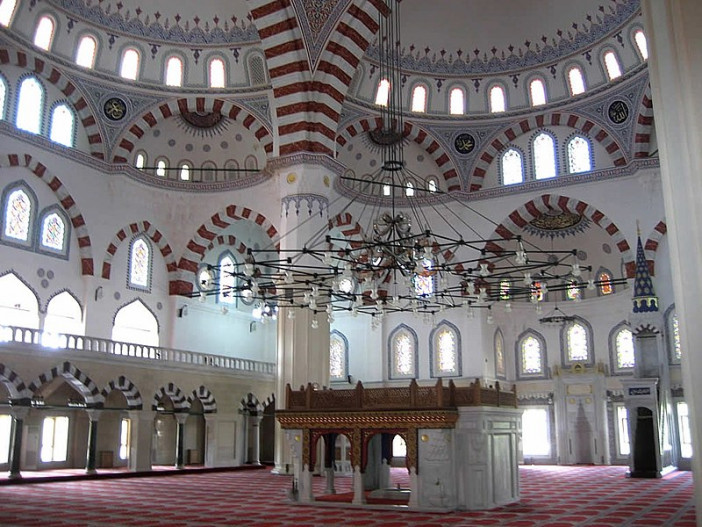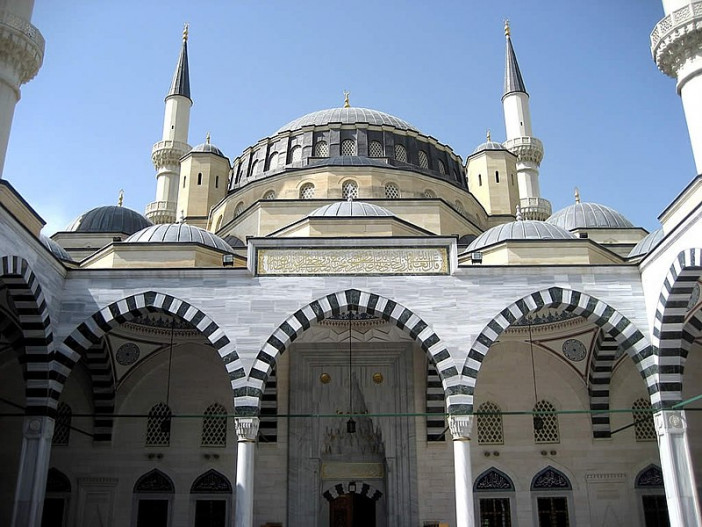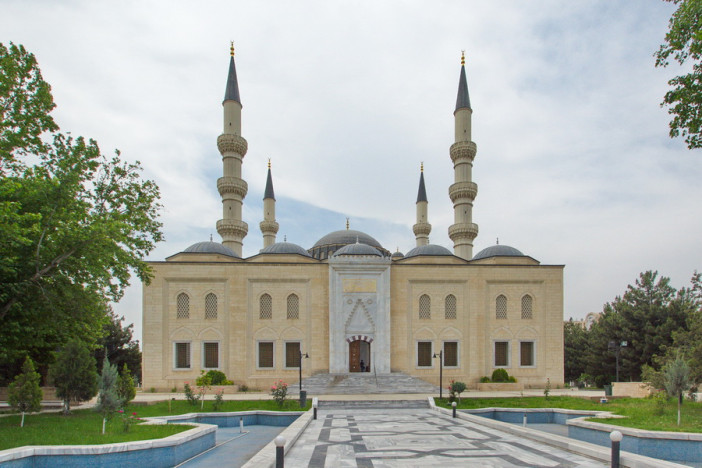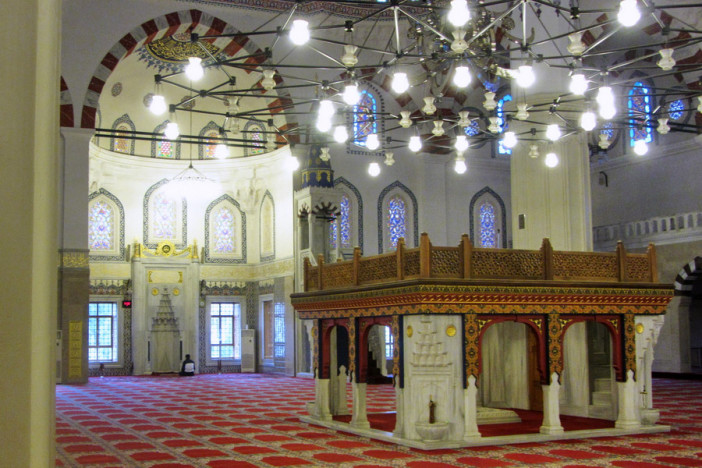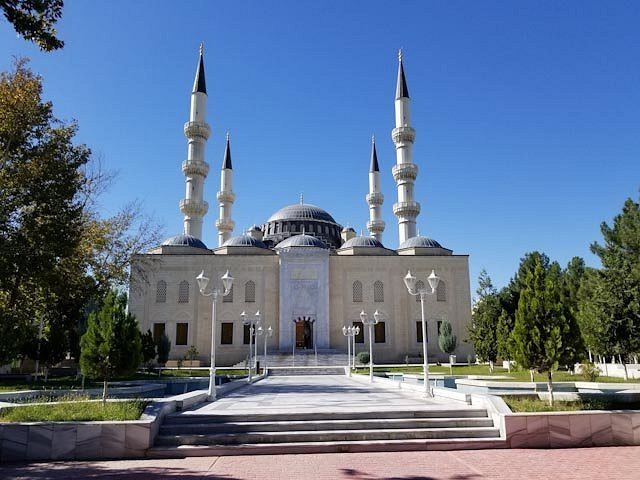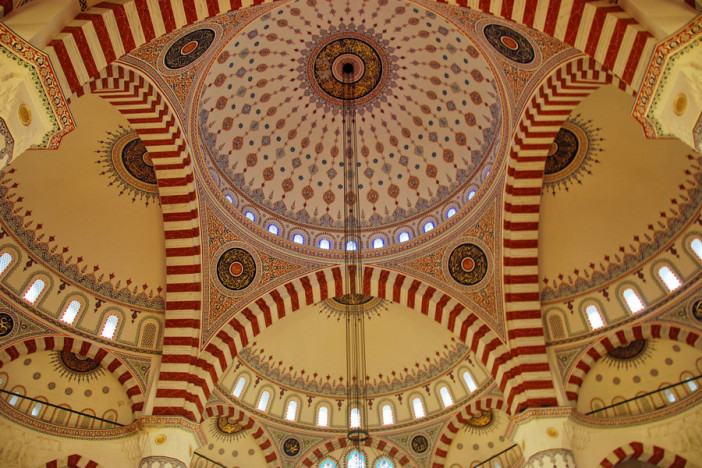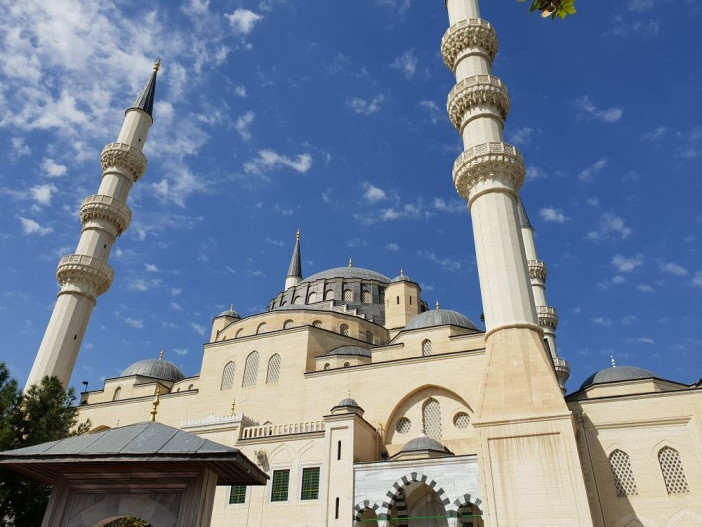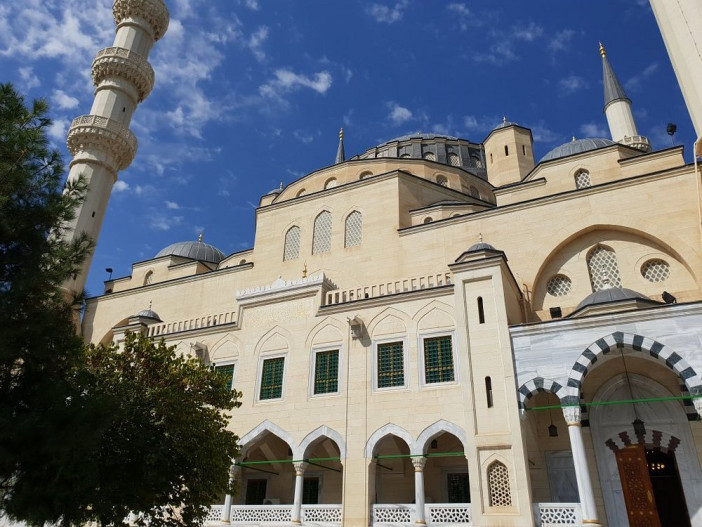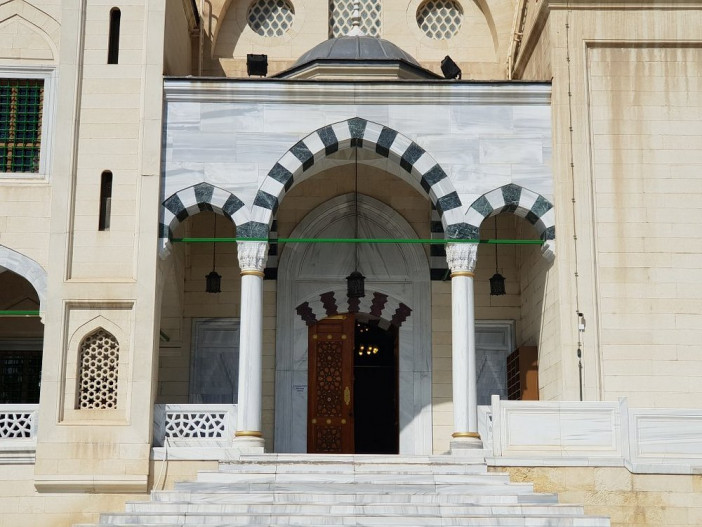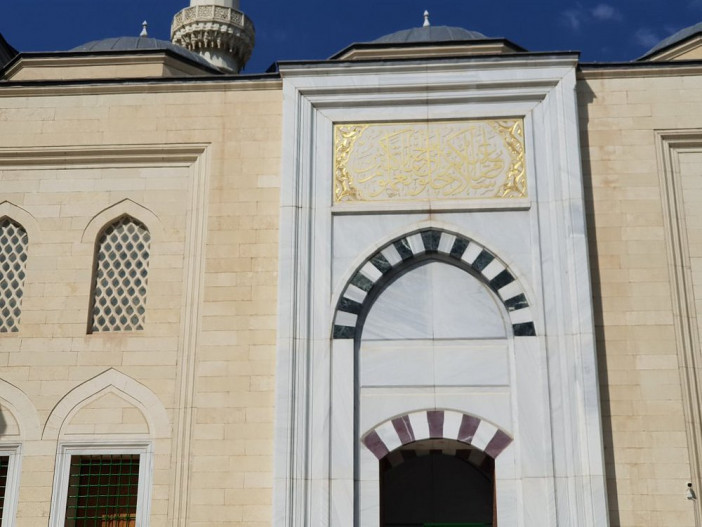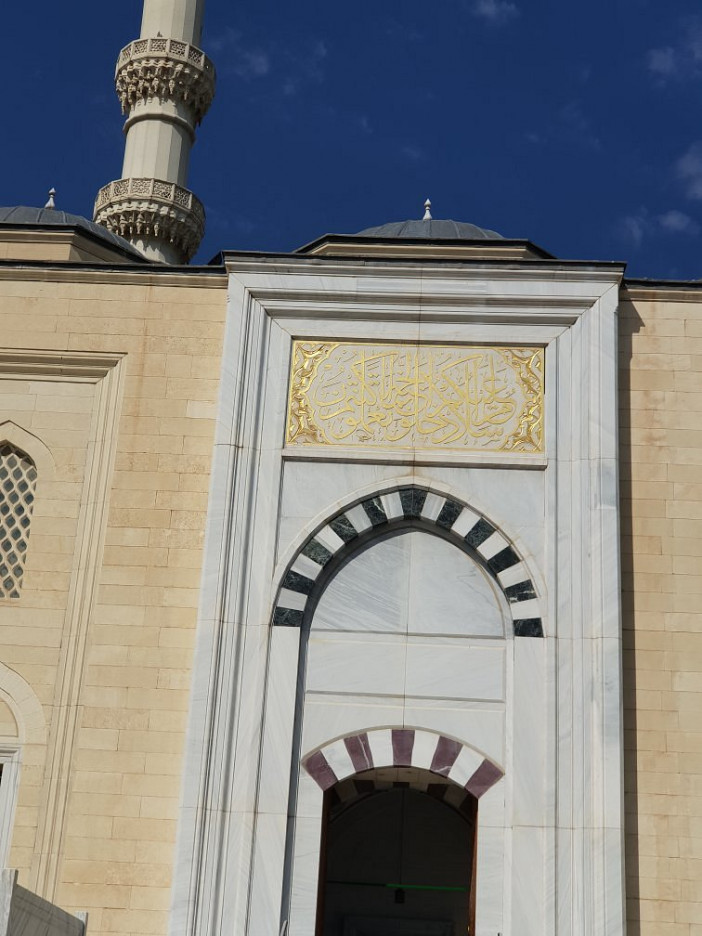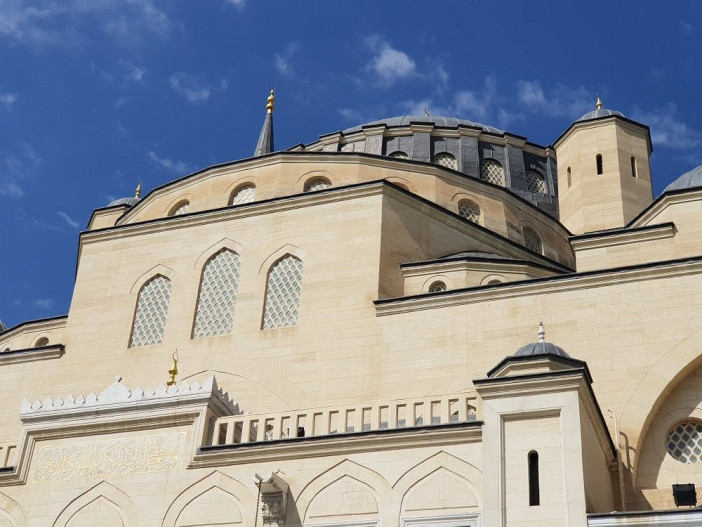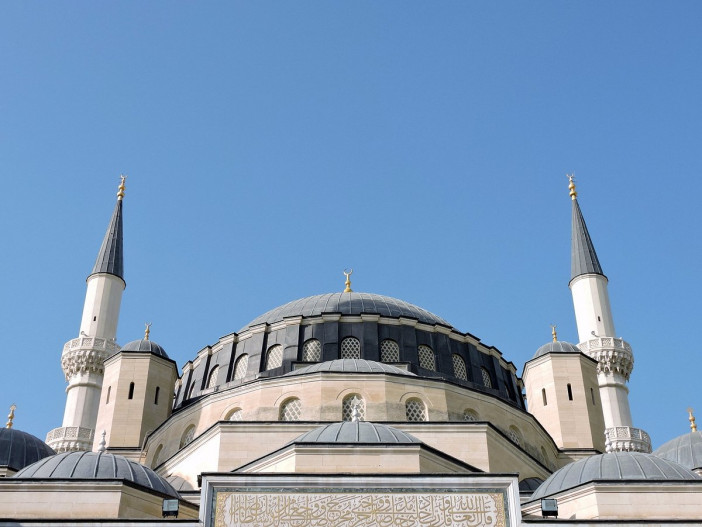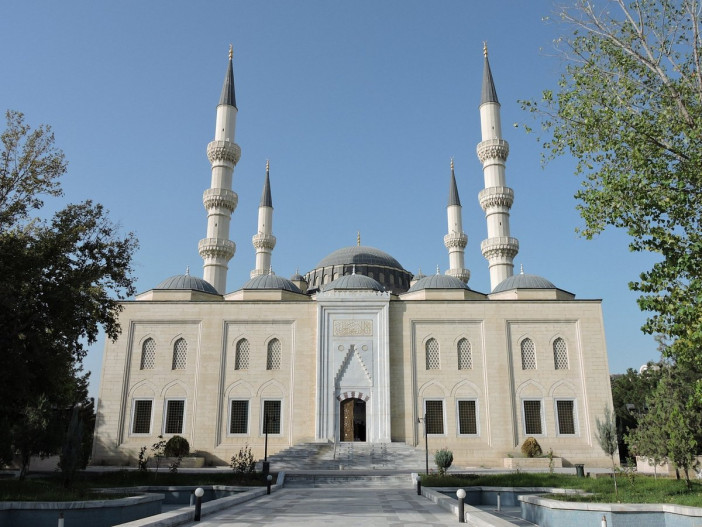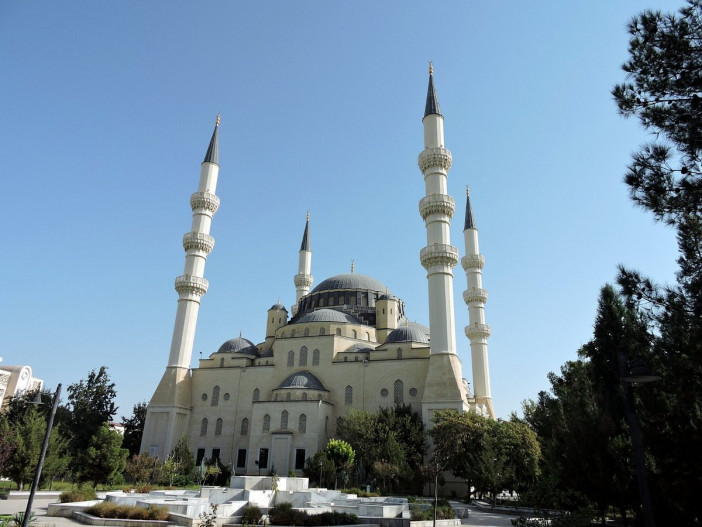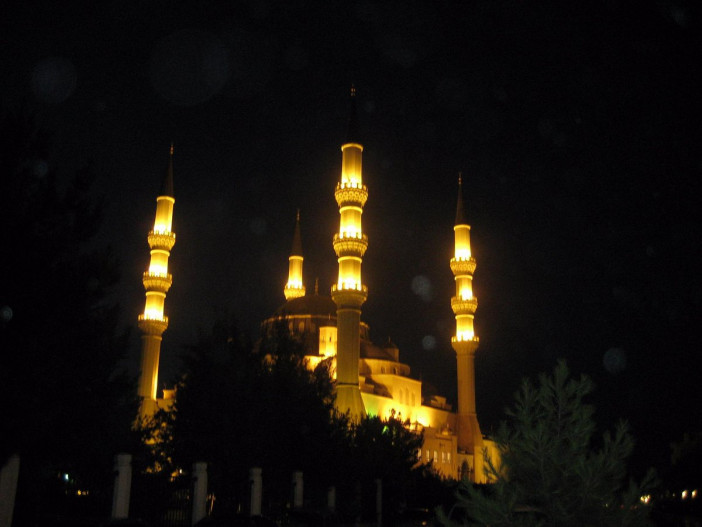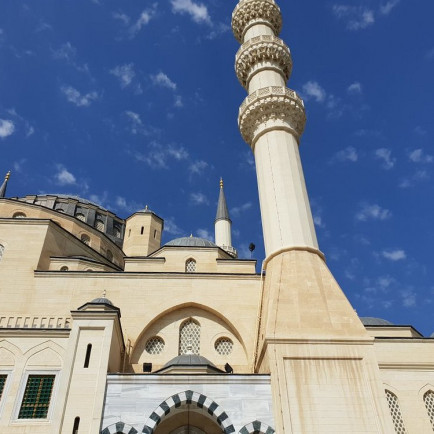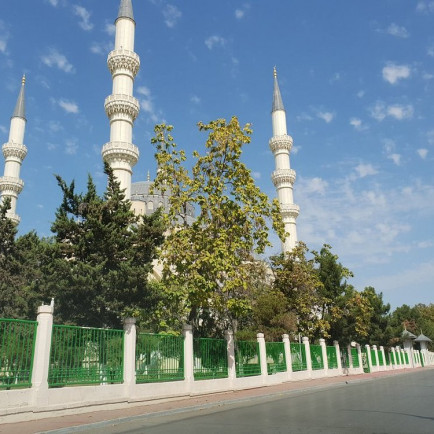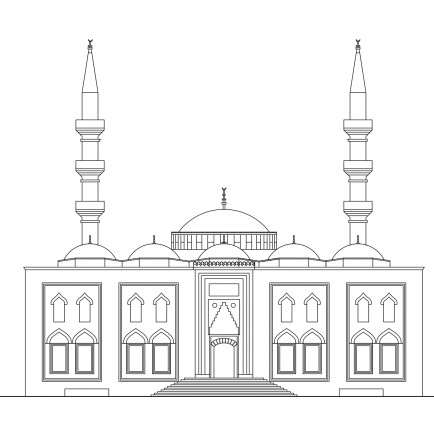Ertuğrul Gazi Mosque
History
The mosque was inaugurated in 1998 after the independence of Turkmenistan in 1990. It is named after Ertuğrul, the father of Osman I, founder of the Ottoman Empire, and was built by Hilmi Şenalp.
Several accidental deaths took place during the construction, and this has led to a belief that the mosque is cursed.
Urban and Architectural
Ertuğrul Gazi Mosque or Ärtogrul Gazy Mosque is a mosque in Ashgabat, Turkmenistan. It is a prominent landmark in Ashgabat with its four minarets and a central dome and has a lavish interior decoration with fine stained glass windows. The exterior and interior design of the Azadi Mosque is made in old-time Islamic and Byzantine style and strikes with its greatness and refinement. Inside the mosque there is a large courtyard with a fountain, and its prayer hall abounds with paintings, gilding and stained glasses.
Description
The white marbled building is reminiscent of the Blue Mosque of Istanbul. The mosque accommodates up to 5,000 worshipers at a time.
References
https://en.wikipedia.org/wiki/Ertu%C4%9Frul_Gazi_Mosque. https://www.advantour.com/turkmenistan/ashgabat/ertugrul-gazi-mosque.htm. https://www.advantour.com/turkmenistan/ashgabat/ertugrul-gazi-mosque.htm
Details
الموقع
ERTUGRUL GAZI MOSQUE ASHGABAT, TURKMENISTAN
عدد المصليين
5000
تاريخ البناء
1998
الرسومات المعمارية
الخريطة
History
The mosque was inaugurated in 1998 after the independence of Turkmenistan in 1990. It is named after Ertuğrul, the father of Osman I, founder of the Ottoman Empire, and was built by Hilmi Şenalp.
Several accidental deaths took place during the construction, and this has led to a belief that the mosque is cursed.
Urban and Architectural
Ertuğrul Gazi Mosque or Ärtogrul Gazy Mosque is a mosque in Ashgabat, Turkmenistan. It is a prominent landmark in Ashgabat with its four minarets and a central dome and has a lavish interior decoration with fine stained glass windows. The exterior and interior design of the Azadi Mosque is made in old-time Islamic and Byzantine style and strikes with its greatness and refinement. Inside the mosque there is a large courtyard with a fountain, and its prayer hall abounds with paintings, gilding and stained glasses.
Description
The white marbled building is reminiscent of the Blue Mosque of Istanbul. The mosque accommodates up to 5,000 worshipers at a time.


